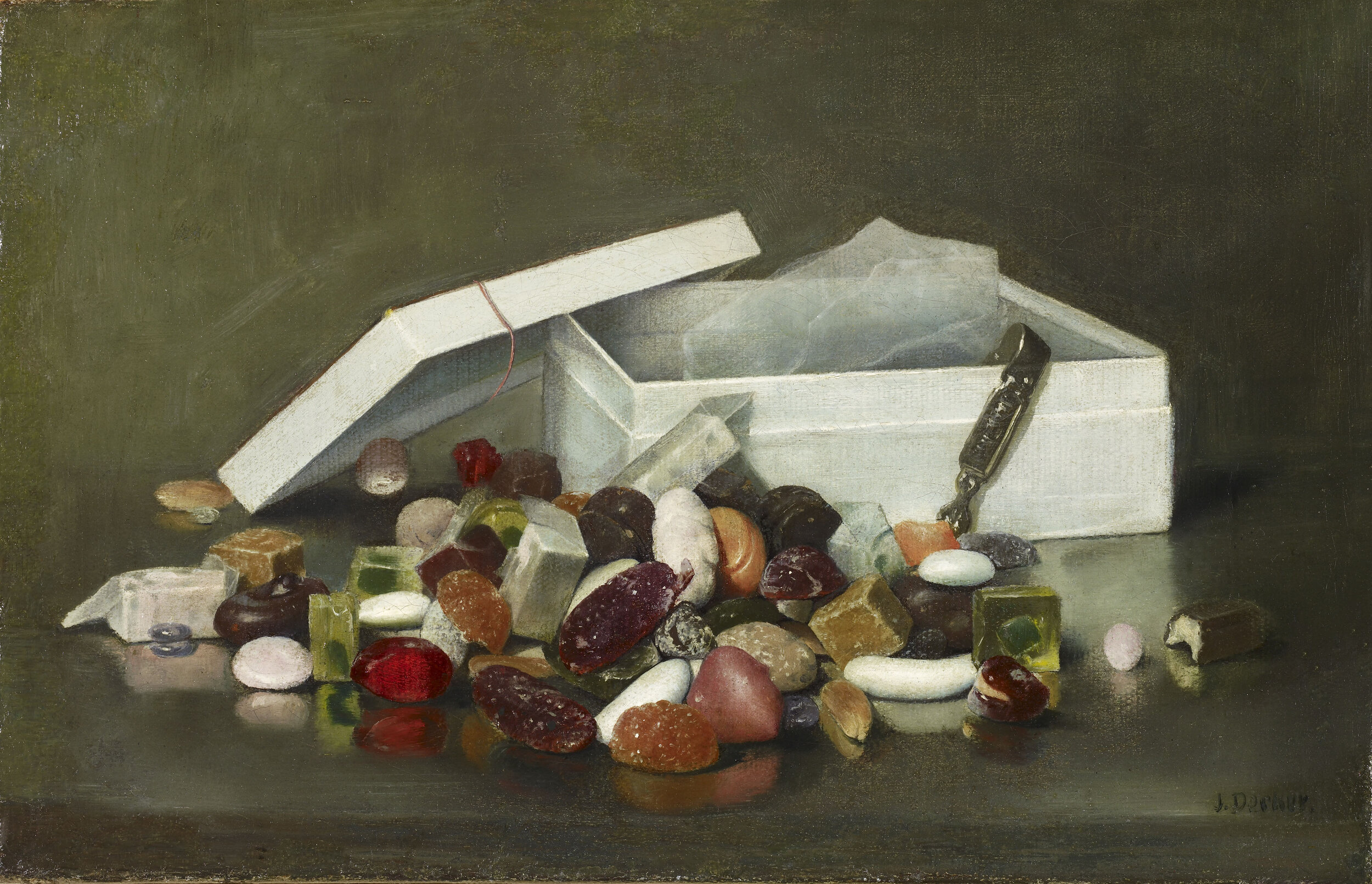Joseph Decker, Upset, ca. 1887, Oil on canvas, 9 x 14 1/4 in. (22.9 x 36.2 cm), San Francisco, M.H. De Young Museum Collection
Trompe l’oeil (“fool the eye”) is a French term for paintings that attempt to fool the viewer into thinking that their subjects are real, rather than imitations of reality. Trompe l’oeil paintings thus render apparent a truth regarding all art—that it is an illusion. Sounds a lot like Virtual Reality, right?
Trompe l’oeil still life paintings date back to ancient times, when images of game, poultry, fruit, and vegetables appeared on the walls of Greek and Roman villas to symbolize the hospitality of the owners. The quality of still life painting was greatly enhanced by the invention of single-point perspective in 15th-century Italy and by new discoveries in the sciences of optics and biology in the 17th-century Netherlands. Many of these innovations entered the United States through the 17th-century Dutch colony of Nieuw Amsterdam (New York City) and through 18th-century Philadelphia, the scientific capital of the American colonies. Table-top still lifes of fruits, which celebrated the natural abundance of the landscape and evoked the sensory pleasures of food consumption, were especially popular in 19th-century America, and provided appropriate decorative motifs for the living and dining rooms where their real-life counterparts appeared.
One of German-born American artist Joseph Decker’s greatest specialties was the highly illusionistic representation of plentiful boxes or baskets displaying beautiful, fanciful content. Whether depicting dozens of apples or cherries, a variety of candy (as in Upset), or other trinkets intended to dazzle the eye and pique the senses, these pictures speak to the increased commodification of consumer tastes–for both sweets and painting–during the latter part of the 19th century.
With Upset–it’s very title playfully confessing the conceit of an overturned container–the viewer is brought into close proximity with the spilled contents of a stark white, opened box. In this tightly compact, horizontal image, a dizzying variety of sweet delicacies are proffered for the viewer–mutli-colored and variously shaped, shiny, gellied, sugar-encrusted, caramelized, cubed and ovoid, candied, paper-wrapped, transparent, and opaque.
Decker’s candies appear so three-dimensional and illusionistic, it makes you want to just reach out and grab a piece or two! Reminds me of Boulevard Arts’ first VR experience around Edouard Manet’s painting “A Bar at the Folies-Bergère,” which–because it seems so absolutely and seamlessly real–still fools users into reaching out to take an orange from a bar maid within the experience.

